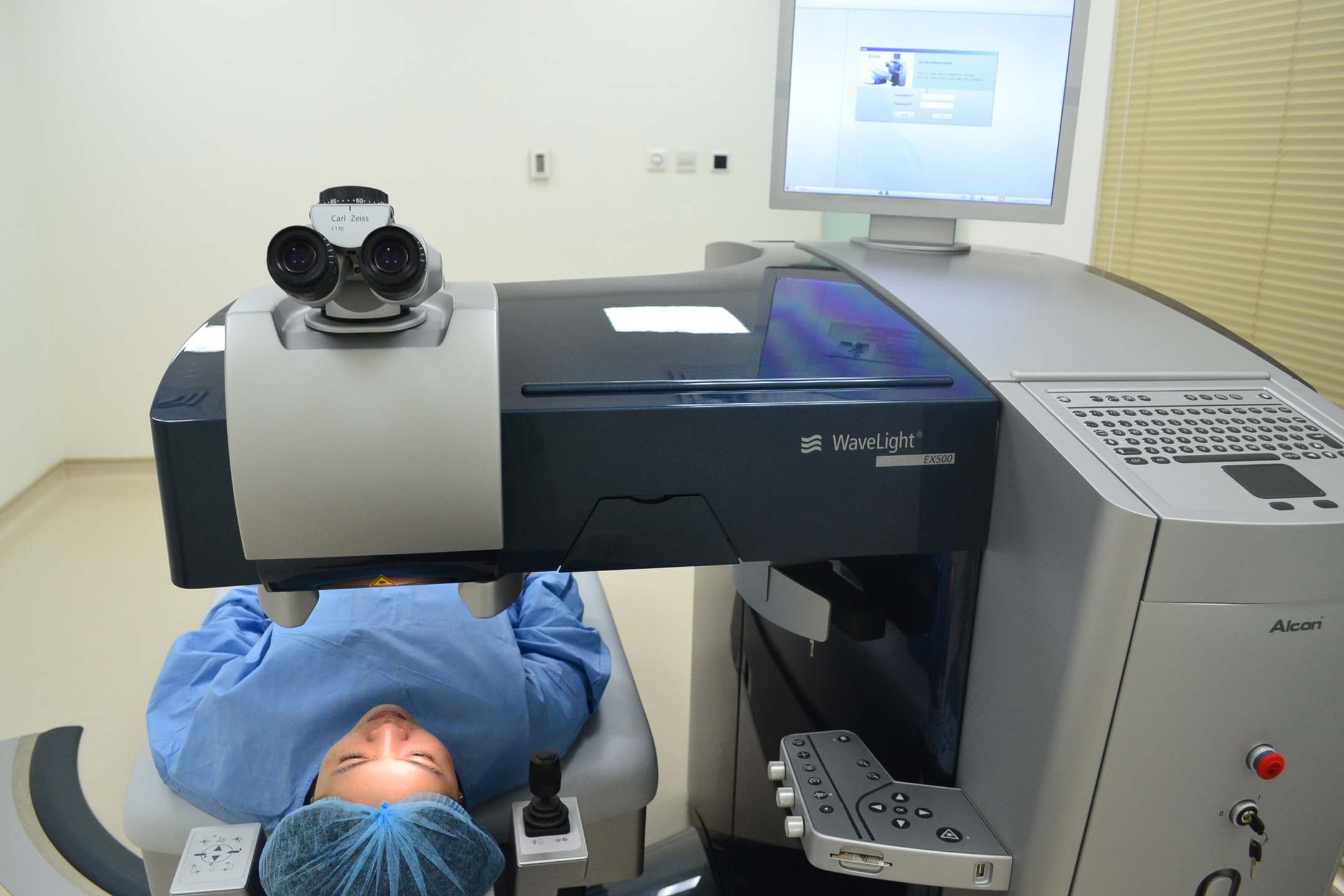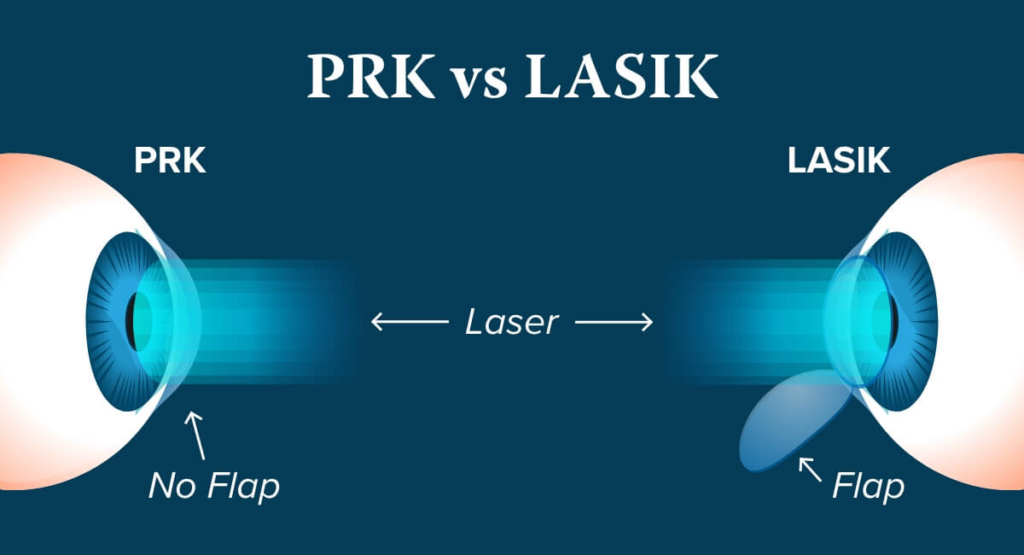
Do you wish you didn’t need corrective lenses like glasses or contacts? In this situation, you may have considered having laser eye surgery for your vision correction.
You’ve probably heard about eye surgery using LASIK, the most common operation for improving one’s eyesight. However, it’s not the sole method of correcting your eyesight.
Despite its widespread appeal, eye surgery LASIK is still only appropriate for certain patients. The thinness of their corneas or the presence of preexisting eye disorders like dry eye syndrome may render LASIK surgery risky for some patients.
Assuming this to be the case, the good news is that patients who aren’t suitable LASIK eye surgery candidates still have other options for vision correction. Among those choices, PRK stands out as particularly promising.
To a large extent, PRK is interchangeable with eye surgery involving LASIK, albeit there are a few key distinctions. Where does PRK diverge from LASIK surgery?
Where does the magic happen? How can you tell if this is the best option for you? Read on to find out what photorefractive keratectomy (PRK) is and if it is a viable option for correcting your eyesight.

Definition of PRK
Photorefractive keratectomy is another name for PRK. In this treatment, light is bent differently as it passes through your eyes thanks to a refractive laser.
The most common causes of refractive problems include myopia, hyperopia, and astigmatism are corneal irregularities. The cornea lies at the front of the eye and is completely transparent.
It’s also the layer that light has to travel through to reach the retina, the nerve tissue that lines the back of your eye. In order for your brain to receive an accurate image of what you’re looking at, light must strike the retina at its centre.
The light has to be refracted by the cornea. But if the cornea isn’t properly shaped, the light won’t refract properly.
As a result, the retina does not take in the light because it is focused in front of or behind it. When you have a refractive defect, you might notice that your vision is distorted at longer distances.
To repair refractive defects, laser refractive surgery alters the cornea’s shape. The epithelium, the cornea’s outermost layer, is first chemically scrubbed away during PRK.
Next, an excimer laser eye treatment is used to precisely remove microscopic amounts of corneal tissue to alter the eye’s general contour. Once the epithelium has fully grown back, which usually takes two weeks, bandage contact lenses are put to the eyes to preserve them.
What Are the Differences Between PRK and LASIK?
PRK was the first form of laser eye treatment, predating the more popular LASIK eye surgery. They pioneered the use of lasers to treat eye problems, and the process was revolutionary.
Both the tools and the understanding of medicine that go into performing the treatment have improved greatly since its debut. Modern PRK technology produces nearly equivalent outcomes to those of eye surgery with LASIK.

This method can effectively and safely treat myopia, hyperopia, and astigmatism.
Both LASIK eye surgery and PRK are laser eye treatments, however there is a significant distinction between the two. It is not necessary to remove the epithelium prior to excimer laser eye treatment during LASIK surgery since a corneal flap is created instead.
Another laser, termed a femtosecond laser, is used to generate the flap by cutting the cornea’s outermost layer in two. There is just enough room for a hinge to lift the flap.
After excimer laser eye treatment, the flap is reapplied to serve as a protective bandage for the eye throughout its recovery. The corneal flap facilitates faster healing and better visual outcomes following LASIK eye surgery.
PRK patients must wait longer for their eyesight to begin to recover. Before they can see the results of the surgery, however, the eye must begin the healing process.
The near-immediate effectiveness and shorter recovery time of the eye surgery with LASIK are two of the reasons why it is so popular. However, since PRK does not necessitate creating a corneal flap, it may be preferable for some individuals.
In What Ways Does PRK Benefit the Patient?
A lot of people who want to fix their eyesight should consider eye surgery involving LASIK. However, LASIK surgery requires a corneal thickness sufficient for flap creation.
The results of LASIK eye surgery might be disastrous for your eyesight if your cornea is too thin. Although most people have corneas that are sufficiently thick to support a flap, some patients may have abnormally thin corneas.
Thinner corneas aren’t an indicator of any underlying health issues, but they do rule out LASIK eye surgery. Patients who would not normally be candidates for laser eye treatment or vision correction procedures can have PRK because it does not require generating a corneal flap.

You probably aren’t aware of your corneas’ thickness, but this is one of the factors that is taken into account when determining whether or not you are a candidate for laser vision correction. At Personal Eyes, we provide thorough eye exams.
Consultation for LASIK eye surgery may reveal that your corneas are too thin, but you may still be a candidate for PRK. If your corneas are too thin for eye surgery with LASIK, but you still want to be free of contact lenses and glasses, PRK may be a good option. Similar to LASIK eye treatment, PRK can permanently improve your eyesight and free you from the burden of corrective lenses.
Consequences in the Long Term
Although eye surgery requiring LASIK is more common, it has results that are on level with those of PRK. Although LASIK’s eye corneal flap is credited with making the early healing process more manageable, the complete recovery period for both operations is equivalent. Healing from LASIK surgery or PRK might take anywhere from three to six months.
Over 95% of PRK and LASIK eye patients report 20/20 or improved vision after the laser eye treatment. PRK, like LASIK, is a long-term solution.
Neither treatment can stop age-related eye problems from causing vision loss. If you’re under 40 and your prescription is stable when you get the operation, you’ve got a great shot at enjoying 20/20 vision for the rest of your life.
Lastly
If you are having any question or inquiry about how to have a correct vision, Laser eye surgery, Corneal tissue problems, Lasik surgery, laser beam in healing process, excimer laser usage, refractive eye surgery, laser treatment, laser suite, contact sports, the surgical procedure for refractive surgery or Lasik laser eye surgery – you should get in touch with us via our Personal Eyes website to book your free assessment today.
More to read: Pros and cons of hiring a cataract surgeon online
